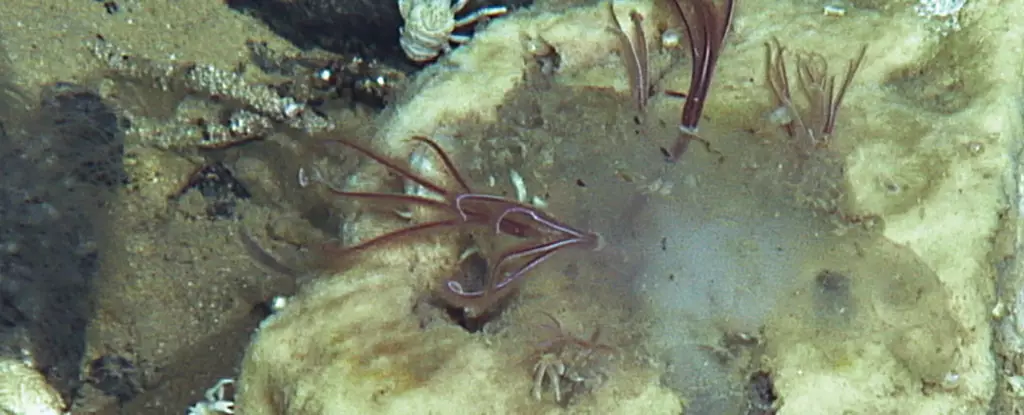The recent discovery of prehistoric bone-eating worms challenges our understanding of evolutionary resilience. Historically, the focus has been on more conspicuous marine life—dinosaurs, whales, giant squid—yet these minuscule worms have persisted in obscurity, quietly shaping oceanic ecosystems for over 100 million years. Their ability to feed on bones, a resource once thought to be highly specialized and limited, exemplifies nature’s resourcefulness. It reflects a mindset of survival that is fundamentally about adaptation—transforming a seemingly inhospitable niche into a sustainable habitat. This insight underscores an uncomfortable truth: evolution isn’t about grandiosity but about relentless perseverance in the face of adversity.
The fact that these worms thrived beneath the ocean’s surface during the Cretaceous period speaks volumes about their evolutionary stability. Their pattern of boring into bones has remained remarkably consistent over hundreds of millions of years, suggesting their role as ancient ecosystem engineers. This longevity raises poignant questions about the resilience of life in extreme environments and how some species carve out niches that allow for persistence far beyond our typical expectations. It challenges the hubris of modern humans, who often see ourselves as the pinnacle of evolution—these worms remind us that survival is often about quiet endurance and specialization rather than dominance.
Evolutionary Conservatism or Stagnation? The Debate About Change
A key insight from this discovery is the apparent evolutionary conservatism displayed by these worms. Their behavior and morphology exhibit astonishing similarity to modern analogs, implying that once these worms developed their bone-boring niche, they experienced little pressure to radically change. This has profound implications for how we interpret evolutionary stability: is it a sign of optimal adaptation or a slow lineage stuck in a rut? The evidence suggests the former—these worms are finely tuned machines perfected over eons.
However, this raises an unsettling question about the broader narrative of evolution. Often, we assume that change is inevitable and that adaptation constantly pushes species forward. Yet, in the case of Osedax worms, minimal morphological change over millions of years hints at a successful strategy that didn’t require significant innovation. This challenges the myth of constant progress prevalent in popular science—sometimes, stability signifies a life well-lived. Nature, in its wisdom, may favor these “born survivors,” species that find their niche and cling to it amid shifting global dynamics.
Implications for Modern Conservation and Scientific Inquiry
Understanding these ancient organisms is more than a fascinating paleontological puzzle—it has pressing implications for modern ecosystems. As climate change accelerates and oceanic conditions transform rapidly, the resilience of specialized species like bone-eating worms becomes a litmus test for the health and adaptability of marine life. Their ancient lineage suggests a capacity to withstand environmental upheavals—if the right conditions persist or can be facilitated. Conversely, the hidden vulnerabilities of such species remain largely unknown, making them critical subjects for conservation efforts that often overlook microbial and microscopic players in the ecosystem.
Scientifically, this research exemplifies the importance of technological innovation—3D CT scans and microscopic analysis open windows into the deep past that were previously inaccessible. They allow us to reconstruct behaviors, interactions, and evolutionary pathways with an unprecedented level of detail. Moving forward, combining these tools with genetic studies holds promise for unearthing the biological secrets behind these worms’ resilience. Yet, this pursuit also warns us of the limits of our knowledge; the more we learn, the more we realize how much remains entombed in the fossil record, waiting to challenge our narratives.
Reevaluating the Narrative of Evolution: Survival Through Niche Specialization
Ultimately, the story of bone-eating worms offers a sobering perspective on the nature of evolution—one that embraces survival through specialization and persistence over rapid change. Their ancient origins, conservatism, and ongoing existence demonstrate that evolution’s true strength lies in adaptation to niche environments, often with little fanfare or visible progress. These worms are a testament to the quiet, relentless march of life—reminding us that, in the grand scheme, resilience often trumps novelty.
Their evolutionary story prompts a reevaluation of what constitutes success in the natural world. It challenges the assumption that only the big, the fast, or the immediately recognizable are worthy of admiration. Sometimes, enduring in silence, patiently exploiting an overlooked resource, is the most profound act of survival. As we confront our own environmental challenges, recognizing the lessons embedded in these tiny, ancient creatures might inspire a more humble appreciation for life’s diverse strategies and the subtle, persistent forces that sustain it across epochs.


Leave a Reply